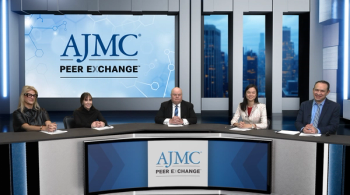
Strength Training Safely Boosts Muscular Dystrophy Outcomes, but Further Study Needed
Data are scarce regarding the benefits of strength training for muscular dystrophies, for which there are no cures.
Strength training to ameliorate the effects of
Their findings were published in a recent issue of
They conducted this analysis to consolidate past study data from this area to gain a better understanding of the efficacy of strength and aerobic training, orthotic devices, aids, and assistive technologies—conservative nonpharmacological treatments—in this patient population. Their search of Medline, CINAHL, Embase, AMED, and the Cochrane Central Register of Controlled Trials covered a timeline from inception through August 22, 2022. The following information was necessary for study inclusion: investigated outcomes among humans who had MD or neuromuscular diseases, evaluated conservative nonpharmacological treatments alone or in combination, had cohorts with 5 or more patients, had full text available, and were published in a peer-reviewed journal. The effects of the treatments that these studies (N = 39 and 957 patients) evaluated were quantified using effect size (ES) and 95% CIs.
“Inappropriate intervention type and dose can lead to detrimental effects, such as overwork weakness, fatigue, discomfort, and pain,” the study authors wrote. “However, evidence supporting the effectiveness of these conservative nonpharmacological interventions is limited and inconclusive.”
Their review demonstrated the positive impact that trunk-oriented strength exercises can have when added to usual care, vs usual care alone, for children whose MD diagnosis is Duchenne muscular dystrophy (DMD). At an ES range of 0.87 to 2.29, improvement was seen in distal upper-limb function, sitting ability, and dynamic reaching balance from the addition of conservative nonpharmacological treatments.
For their analyses, the investigators used Cohen’s d formula to calculate ES as small (0.20-0.49), medium (0.50-0.79), large (0.80-1.29), and very large (≥1.3).
Another improvement was seen among adults whose MD diagnosis was facioscapulohumeral dystrophy (FSHD), also a genetic disease like DMD but one that primarily affects facial, shoulder blade, and upper arm muscles.2 Pain intensity and maximum voluntary isometric contraction were improved following the use of neuromuscular electrical stimulation and vibratory proprioceptive assistance, respectively, on an ES range of 1.58 to 2.33.
Further, for adults whose MD diagnosis was FSHD, limb-girdle muscular dystrophy (LGMD), or
Adults living with myotonic dystrophy type 1 (DM1) were able to better their perceived exertion rate and gate, as well (ES range, 0.92-3.83).
Most of the studies included in this analysis had been published in the past 10 years (74%), investigated outcomes among adult patients (67%), were from Europe (69%), and covered DMD (13 studies), DM1 (11 studies), or FSHD (8 studies). Mobility levels among the 957 patients ranged from independently mobile to wheelchair dependent, and the conservative nonpharmacological interventions were divided into 4 groups: orthotic devices, manual therapy, assistive technologies, and exercise interventions.
“The positive findings from strength training interventions have possible clinical implications given historical concerns about exercise interventions potentially causing harm in MD…Numerous questions regarding the effectiveness of these interventions remain unanswered, specifically about certain outcomes, populations, and intervention types,” the authors concluded. “Future large-scale, well-designed, and well-reported studies are needed to clarify the role of nonpharmacological interventions in MD and to support their clinical use.”
References
- Leone e, Pandyan A, Rogers A, Kulshrestha R, Hill J, Phili F. Effectiveness of conservative non-pharmacological interventions in people with muscular dystrophies: a systematic review and meta-analysis. J Neurol Neurosurg Psychiatry. Published online December 12, 2023. doi:10.1136/jnnp-2023-331988
- Facioscapulohumeral muscular dystrophy. National Organization for Rare Disorders. Updated March 6, 2020. Accessed February 22, 2024.
https://rarediseases.org/rare-diseases/facioscapulohumeral-muscular-dystrophy
Newsletter
Stay ahead of policy, cost, and value—subscribe to AJMC for expert insights at the intersection of clinical care and health economics.






































